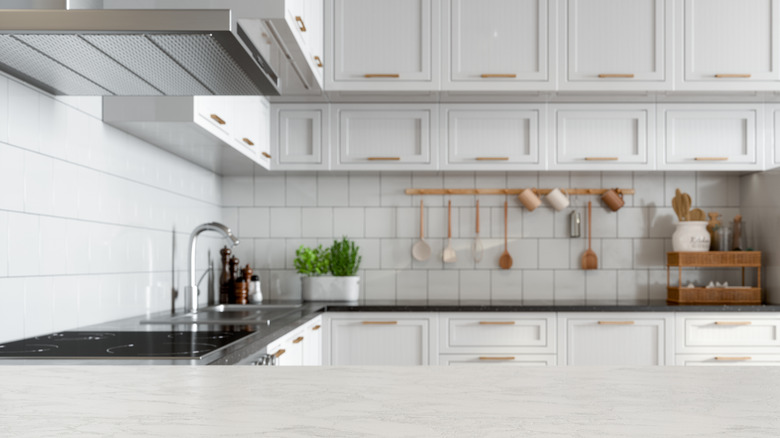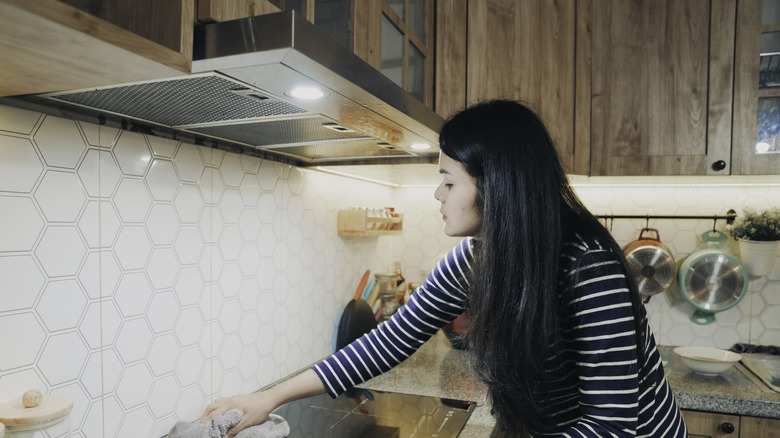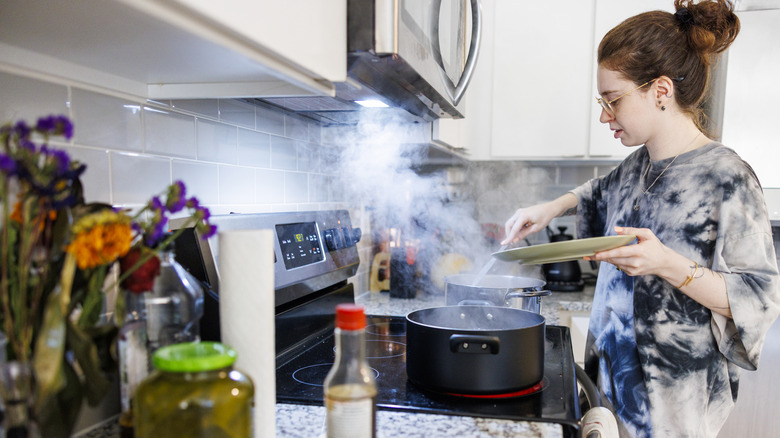How To Pick The Best Under Cabinet Range Hood For Your Kitchen
Designing your dream kitchen can be a blast. From choosing the cabinet paint color to the backsplash tile and drawer handles, it's full of fun decisions. However, one of the easily overlooked aspects is the stove hood. Under-cabinet range hoods are a popular choice in many homes, as they can be tucked under your cabinets without obstructing the flow of the room's design. These range hoods are also easy to clean while saving space and having a modern appearance; they are made from durable materials, such as stainless steel, and come in a huge price range. Too often, though, they are only selected and installed as an afterthought once you've decided on all of the other features of the kitchen.
Knowing you want an under-counter model that fits underneath your overhead cabinets or microwave is the first step to narrowing your options down, but you should also keep the size, exhaust system, installation, and bonus features in mind. Stove hoods contain exhaust fans, which filter grease and smoke from the air when cooking, leaving you with cleaner air, as well as less grease and debris buildup around the stove. The fan should be on any time you're cooking, whether it's a single egg or a massive dinner party for ten, so installing one is a non-negotiable. Here's everything you need to factor in when buying an under-cabinet stove hood.
Avoid these under-cabinet stove hood mistakes
The biggest consideration when buying your under-cabinet hood has got to be the size. You need to consider the size of your stove range and cabinets. Your hood should be at least as large as the stovetop, as a hood sized for just four burners on a huge eight-burner range will not be able to filter grease and smoke adequately. This will cause sticky oil buildup and smoke damage on the uncovered bottoms of the cabinets. But don't overshoot — you don't want a hood that juts out from under the cabinets — which makes for an overhead hazard that you can easily bump into while cooking or cleaning in the kitchen. Opt for a hood that covers the entirety of the range but doesn't overhang the cabinets and countertops by more than an inch or two. You also want a few inches between the sides of the hood and the cabinets for ventilation purposes.
Another key factor is the exhaust system. You have two options for under-cabinet stove hoods: ducted or ductless. Ducted hood fans filter grease and smoke and push them outside the home, while ductless hoods operate internally, filtering the air and releasing it back into the room. Ducted hoods are generally more efficient and effective at air filtration, but they involve more complicated installation and are best suited for external walls for simpler engineering. If your stove is on an internal wall, a ductless system might be the best option.
Stove hood bonus features and considerations
Another factor when choosing the right range hood for your home is airflow capacity, or how quickly air can move through the system. As a base range, your hood should have 100 CFM (cubic feet per meter) for every 10,000 BTU (British thermal units). For instance, a stove with 200,000 BTUs would require 2,000 CFMs to work efficiently. Proline Range Hoods recommends a hood with at least 600 CFM for most domestic stoves. But if you're deep-frying or doing any cooking that produces heavy amounts of grease splatter and smoke, you want a stove hood with high airflow.
The final factor comes down to personal preference. Have you ever found yourself feeling completely overwhelmed while cooking, only to realize it's because the stove fan is on and drowning out all other noises in the kitchen? If that noise tends to annoy you, you want to find a model with several settings to choose from. Many include a high, medium, or low setting, so you can use lower settings to filter minimal amounts of smoke and grease without the heavy noise pollution from the fans. However, low settings often use significantly less power, so check the specs to make sure each setting is capable of actually filtering grease and smoke. To ensure the lowest setting still works, you could opt for a heavy-duty hood with a powerful low setting and only use the highest mode for deep-frying or smoke-heavy applications.


